Table of Contents
Come join us now, and enjoy playing your beloved music and browse through great scores of every level and styles!
Can’t find the songbook you’re looking for? Please, email us at: sheetmusiclibrarypdf@gmail.com We’d like to help you!
Sorabji: In the Hothouse (from Two Piano Pieces) sheet music, Noten, partitura, spartiti 楽譜

Best Sheet Music download from our Library.

Please, subscribe to our Library.
If you are already a subscriber, please, check our NEW SCORES’ page every month for new sheet music. THANK YOU!
Browse in the Library:
Or browse in the categories menus & download the Library Catalog PDF:
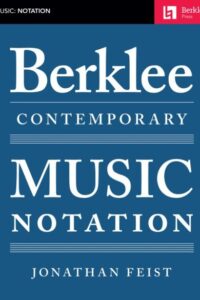
Who was Sorabji?
Kaikhosru Shapurji Sorabji: The Hermit of Modernist Maximalism
In the often-crowded pantheon of 20th-century composers, Kaikhosru Shapurji Sorabji (1892-1988) occupies a unique and enigmatic niche. A composer of staggering ambition, labyrinthine complexity, and self-imposed isolation, Sorabji crafted some of the most monumental, technically demanding, and stylistically idiosyncratic music ever conceived. His work, largely ignored during his lifetime and still challenging audiences today, represents a singular path through modernism – one defined by maximalism, intricate ornamentation, transcendental virtuosity, and a fierce, almost hermetic, independence.

Biography: A Self-Forged Identity
- Birth & Heritage: Born Leon Dudley Sorabji on August 14, 1892, in Chingford, Essex, England. His father was a Parsi engineer from India (thus the Persian-derived name Sorabji), and his mother was English-Spanish. This mixed heritage profoundly shaped his sense of identity, though he felt alienated from both cultures.
- The Name: Around 1914, he legally changed his name to Kaikhosru Shapurji Sorabji. “Kaikhosru” and “Shapurji” were Persian names chosen for their resonance and connection to ancient Persian history and Zoroastrianism, reflecting his deliberate construction of a unique persona.
- Musical Formation: Largely self-taught. He received some piano lessons in his youth but had no formal composition training. His musical education came through voracious listening, score study (especially Bach, Liszt, Busoni, Debussy, Ravel, Scriabin, Szymanowski, Medtner), and wide reading in literature, philosophy, and the occult.
- Early Career & Criticism: Worked as a music critic (under the pseudonym “S. Godfrey”) for outlets like The New Age and The New English Weekly from the 1910s to the 1930s. His critiques were famously acerbic, insightful, and often scathing, particularly targeting English musical provincialism and composers he deemed mediocre (which was most of them).
- The Recluse: Deeply disillusioned by the musical establishment and critical reception to his early performances (which were rare and often controversial), Sorabji gradually withdrew from public musical life starting in the late 1930s. After his mother’s death in 1940, he retreated almost completely to his secluded home “The Eye” in Corfe Castle, Dorset, where he lived with his companion, Reginald Norman Best, until his death. He forbade performances of his music for decades.
- The Ban Lifted: In 1976, pressured by a growing underground interest spearheaded by pianists like Yonty Solomon and Alistair Hinton (who later became his literary executor), Sorabji reluctantly lifted the ban on performances, provided he approved the performer.
- Death: Sorabji died on October 15, 1988, in Winfrith Newburgh, Dorset, leaving behind a colossal legacy of unpublished manuscripts.
Works: Monuments of Sound

Sorabji’s output is vast and overwhelmingly dominated by solo piano music, though he also composed orchestral works, chamber music, organ symphonies, and songs. His works are renowned for their extreme length, density, and technical difficulty, pushing the boundaries of playability.
- Key Masterpieces:
- Opus Clavicembalisticum (1930): His most famous (or infamous) work. A colossal 4+ hour piano epic in 12 movements (including fugues, passacaglias, toccatas, cadenzas), often considered one of the most challenging solo piano works ever written. A summit of contrapuntal complexity and virtuosic display.
- Symphonic Variations for Piano (1935-37): Another monumental work, exploring vast variation forms over an extended duration.
- Sequentia Cyclica super “Dies iræ” ex Missa pro Defunctis (1948-49): A massive cycle of 27 variations on the “Dies Irae” chant, demonstrating his intricate contrapuntal and transformative skills.
- 100 Transcendental Studies (1940-44): True to their name, these studies explore extreme technical and expressive demands far beyond those of Liszt or Chopin.
- Symphonies for Solo Piano: Several exist, including his Symphony No. 2 (“Jāmī”), blending orchestral textures and scope onto the piano.
- Gulistān – Nocturne for Piano (1940): A prime example of his lush, perfumed, and incredibly intricate “Persian”-inspired style.
- Concerti: He wrote several for solo piano and orchestra (e.g., Concerto per suonare da me solo e senza orchestra, per divertirsi), which are symphonic in scale and require superhuman virtuosity.
- Symphonies for Organ: Vast, complex works exploring the sonic possibilities of the instrument.
Analysis of Style: A Universe of Complexity
Sorabji’s style is instantly recognizable yet difficult to categorize. It synthesizes diverse elements into a unique and overwhelming whole:
- Maximalism: This is the defining characteristic. Sorabji embraced extremes:
- Length: Works lasting several hours are common.
- Density: Highly polyphonic textures, often with multiple independent melodic lines woven together in complex counterpoint (influenced by Bach, Busoni).
- Virtuosity: Demands transcendental technique – cascades of notes, complex polyrhythms, wide leaps, immense power, and extreme delicacy. He wrote as if the pianist had four hands.
- Ornamentation: Baroque-like ornamentation (trills, mordents, turns, grace notes) is ubiquitous, often layered and integral to the texture, creating shimmering, kaleidoscopic surfaces (influenced by Scriabin, Szymanowski, Middle Eastern/Persian music).
- Dynamic Range: From barely audible whispers to thunderous, percussive climaxes.
- Harmony: A complex fusion:
- Rooted in late-Romantic chromaticism (Scriabin, Szymanowski, early Schoenberg).
- Freely employed dissonance, clusters, and intricate chord structures.
- Often retained a sense of tonal centers or polarity, even amidst dense chromaticism (unlike strict atonality).
- Incorporated modal inflections, sometimes evoking Persian or Spanish flavors.
- Rhythm: Highly complex and fluid:
- Frequent use of polyrhythms (multiple simultaneous rhythms), cross-rhythms, and nested tuplets (triplets within quintuplets, etc.).
- Tempo often fluctuates wildly, requiring immense control.
- A sense of improvisatory freedom within highly structured forms.
- Form: Often large-scale, complex, and idiosyncratic:
- Favored variations (passacaglias, chaconnes), fugues, toccatas, and intricate multi-movement structures (like the Opus Clavicembalisticum).
- Forms were often expansive and cumulative, building through layered repetition and intensification rather than traditional development.
- Architecture was paramount, even in the densest textures.
- Influences (Assimilated, Not Imitated):
- Ferruccio Busoni: The most profound influence. Busoni’s ideas of “Young Classicism,” the transcendental potential of the piano, the fusion of Bachian counterpoint with modern harmony, and the concept of “Junge Klassizität” resonated deeply. Sorabji dedicated his Opus Clavicembalisticum to Busoni’s memory.
- Franz Liszt: Virtuosity, thematic transformation, large-scale forms, and the symphonic poem concept translated to piano.
- J.S. Bach: Contrapuntal mastery, structural rigor, and the use of forms like fugue and passacaglia.
- Alexander Scriabin: Mysticism, harmonic language, dense textures, and ecstatic climaxes.
- Karol Szymanowski: Sensuous harmony, intricate ornamentation (especially in the “Persian” inspired works like Métopes and Masques), and voluptuous textures.
- Debussy & Ravel: Color, texture, exoticism, and pianistic refinement.
- Mediterranean & Persian Cultures: While not authentically recreating these styles, he evoked their essence through ornamentation, melodic turns, and titles (Gulistān, Jāmī), reflecting his fascination with his Persian heritage and the wider Orient.
- Aesthetic: Sorabji’s music aimed for:
- Transcendence: Pushing beyond perceived limits of instrument, performer, and listener.
- Luxuriance & Opulence: A rich, sensual, almost decadent sound world.
- Intellectual Rigor: Underlying the sensual surface was meticulous structural planning.
- Individualism: A complete rejection of prevailing trends (serialism, neoclassicism, minimalism) in favor of his own uncompromising vision.
Legacy: From Obscurity to Cult Status
Sorabji’s legacy is complex and evolving:
- Decades of Neglect: His self-imposed exile and performance ban meant his music was virtually unknown outside a tiny circle for nearly 40 years. Manuscripts were inaccessible, unplayable, and unpublished.
- The Pioneers (1970s-): The lifting of the ban sparked interest. Pianists like Yonty Solomon, Michael Habermann, Geoffrey Douglas Madge (who made the first complete recording of Opus Clavicembalisticum in 1977), and later Marc-André Hamelin, Jonathan Powell, Fredrik Ullén, and Ronald Stevenson began the monumental task of learning, performing, and recording his works. This required immense dedication and technical prowess.
- Publication & Scholarship: The Sorabji Archive, established by Alistair Hinton (Sorabji’s literary executor), has been crucial in cataloging, editing, and facilitating the publication of scores (primarily by Dover Publications and The Sorabji Music Archive). Scholarly work is gradually increasing.
- Recordings Renaissance: The CD era and digital distribution (YouTube, streaming) have been transformative. Dedicated labels (Altarus, BIS, Toccata Classics, Piano Classics) have released numerous recordings, making this once-inaccessible music available globally. Complete cycles of the 100 Studies and other major works are underway.
- The Cult & The Challenge: Sorabji remains a “composer’s composer” and a cult figure. His music is not mainstream concert fare due to its extreme demands and duration. However, it commands deep respect and fascination among pianists, composers, and listeners drawn to its unique sound world and uncompromising vision. He is seen as the ultimate iconoclast, forging a path utterly independent of 20th-century musical fashions.
- Influence: His direct influence on other composers is hard to pinpoint due to his obscurity, but he stands as a powerful symbol of uncompromising artistic integrity and the exploration of extreme complexity and virtuosity. Composers interested in maximalism, intricate counterpoint, or pushing pianistic limits inevitably encounter his shadow.
- Copyright Controversy: The complex copyright status of his works (involving the Sorabji Archive and publishers) has sometimes been a point of friction within the community of performers and scholars seeking access.
Sorabji: The Solitary Giant
Kaikhosru Shapurji Sorabji was a true original. He inhabited a musical universe entirely of his own making, synthesizing diverse influences into a style characterized by unparalleled complexity, sensuous opulence, and transcendental ambition. His deliberate withdrawal from the world ensured decades of obscurity, but the dedication of pioneering performers and the power of recording technology have brought his extraordinary soundscapes to light. While his music remains challenging and demanding, it offers unparalleled rewards: a journey into a world of labyrinthine beauty, overwhelming power, and intellectual fascination. Sorabji stands as a testament to the power of an utterly individual artistic vision, uncompromising in its scope and ambition, a solitary giant whose monumental creations continue to challenge and inspire. He redefined the possible for the piano and left a legacy that continues to unfold as more performers dare to scale his musical Himalayas.
“In the Hothouse” is one of Sorabji’s most evocative and frequently performed works, serving as a perfect entry point into his dense, sensuous sound world. Here’s a detailed look at this fascinating piece:
Context: Two Piano Pieces (1918)
- Composed: 1918 (early in Sorabji’s career, age 26).
- Publication: First published in 1920, making it one of the earliest Sorabji works available in print.
- The Pair: “In the Hothouse” is paired with “Toccata” – a contrasting, hyper-virtuosic, and structurally complex piece showing his Busoni/Liszt influences. “In the Hothouse” offers the sensual, atmospheric counterpoint.
- Significance: Represents Sorabji’s early mastery of texture, harmony, and evocative atmosphere. It predates his gargantuan works but already displays his unique voice.
“In the Hothouse”: A Sensory Immersion
- Title & Imagery: The title instantly conjures an environment: humid, lush, teeming with exotic, overripe plant life, heavy perfumes, and stifling, enclosed heat. Sorabji translates this sensory overload into sound.
- Form & Structure: Relatively free and rhapsodic. It unfolds as a continuous, organic stream of consciousness rather than adhering to strict classical forms. Think of it as an elaborate, decadent arabesque.
- Style & Character:
- Extreme Sensuality: This is the defining feature. The music drips with lush, complex harmonies and suffocatingly rich textures.
- Harmony: Deeply chromatic, rooted in late Scriabin and early Szymanowski. Expect dense, constantly shifting chords: augmented harmonies, whole-tone inflections, unresolved dissonances creating tension, and sudden moments of surprising consonance like shafts of light piercing foliage. It avoids traditional tonality but gravitates around implied centers.
- Texture: Thick, layered, and constantly in motion. Tremolos, trills, rapid filigree (ornamental passages), and cascading arpeggios create a shimmering, humid haze. Melodies are often embedded within this dense undergrowth rather than standing clearly apart. The writing often requires the pianist to sustain multiple layers simultaneously.
- Rhythm: Fluid and flexible, often obscured by the sheer density of notes and ornamentation. Rubato (expressive tempo fluctuations) is essential. While less overtly complex polyrhythmically than his later works, the rhythmic flow feels organic and improvisatory.
- Dynamics & Articulation: Wide dynamic range, often shifting suddenly between extremes (e.g., thunderous climaxes collapsing into fragile whispers). Articulation varies from sharp staccatos to legatissimo passages that blur together. Pedaling is crucial for sustaining the harmonic haze and creating resonance.
- Ornamentation: Quintessential early Sorabji. Trills, mordents, turns, and grace notes are not mere decoration; they are the texture, creating constant flickering movement and contributing to the claustrophobic, teeming atmosphere. This foreshadows the intricate ornamentation dominating his mature style.
- Emotional Landscape: Evokes opulence, decadence, languor, mystery, stifling heat, hidden dangers, and overwhelming sensory stimulation. There’s a sense of beauty bordering on the grotesque due to its sheer intensity.
Influences Audible in “In the Hothouse”
- Scriabin (Primary): The harmonic language (mystic chords, unresolved dissonance, ecstatic climaxes), the sensual atmosphere, and the use of trills/tremolos are deeply indebted to Scriabin’s late sonatas and poems (e.g., Vers la flamme). Sorabji pushes Scriabin’s decadence further.
- Szymanowski: The opulent textures, perfumed harmonies, and “orientalist” exoticism (though abstracted here) strongly recall Szymanowski’s “Métopes” or “Masques,” which Sorabji admired deeply.
- Debussy: The focus on atmosphere, texture, and harmonic color (whole-tone scales, parallel chords) shows Debussy’s influence, though rendered with far greater density and intensity.
- Ravel: The virtuosic filigree and lush harmonies (think “Gaspard de la Nuit,” especially “Ondine” or “Le gibet”) are a touchstone, again amplified.
- Liszt: The rhapsodic freedom and dramatic gestures hint at Liszt, though filtered through a post-Scriabinesque lens.
Performance Challenges
- Texture & Balance: Maintaining clarity amidst the dense, rapidly shifting textures is paramount. The pianist must carefully voice chords and layers to prevent muddiness while sustaining the essential harmonic haze.
- Ornamentation as Texture: Executing the constant ornamentation smoothly and evenly, integrating it into the melodic and harmonic flow rather than treating it as mere decoration.
- Dynamic Control: Navigating the extreme dynamic contrasts and sudden shifts without sounding jarring. Creating a true pianissimo shimmer within complexity is incredibly difficult.
- Rubato & Phrasing: Applying expressive tempo fluctuations naturally while maintaining the overall structural coherence and forward momentum of the rhapsodic form.
- Pedaling: Using the pedal to create resonance and blend without causing harmonic blurring or loss of rhythmic definition. Requires exceptional sensitivity.
- Stamina & Focus: While shorter than his later works (typically 12-15 minutes), the piece demands intense concentration and physical control to sustain the atmosphere and navigate the technical intricacies.
Legacy & Significance of “In the Hothouse”
- Accessibility: It remains one of Sorabji’s most “accessible” works due to its evocative title, relatively shorter duration, and concentrated expression. It’s a frequent choice for pianists introducing audiences to Sorabji.
- Blueprint: It serves as a crucial blueprint for Sorabji’s mature style, showcasing his core preoccupations: sensuality, harmonic density, intricate ornamentation as texture, and atmospheric evocation, all present in embryonic form.
- Performance History: Despite Sorabji’s later ban, “In the Hothouse” (along with the Toccata) was one of the few pieces occasionally performed during his lifetime (e.g., by Sorabji himself and pianist Reginald Paul) and became a key work for the pioneering generation post-1976 (Yonty Solomon, Michael Habermann, Marc-André Hamelin, Jonathan Powell, Fredrik Ullén).
- Gateway Piece: It functions as a vital “gateway drug” into Sorabji’s world. Its success in conveying its intense atmosphere often encourages listeners to explore his more monumental, complex works.
- Standalone Masterpiece: Regardless of its role as an introduction, it stands as a perfectly formed and powerful piece of early modernist piano writing, a miniature tone poem of extraordinary evocative power.
“In the Hothouse” is a sun-drenched, overripe, and intoxicating immersion into Sorabji’s unique aesthetic. It captures the essence of his sensual maximalism in a concentrated dose, showcasing his debt to Scriabin and Szymanowski while asserting his own distinct voice. Its evocative power, technical brilliance, and relative brevity ensure its enduring place as one of his most beloved and frequently performed works, offering a compelling glimpse into the hothouse of Sorabji’s extraordinary musical imagination.
| Artist or Composer / Score name | Cover | List of Contents |
|---|---|---|
| Billy Strayhorn Chelsea Bridge |
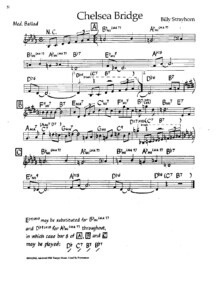 |
|
| Billy Strayhorn Lotus Blossom Transcription As Played By Duke Ellington In 1967 |
 |
|
| Billy Strayhorn Lush Life songbook Vol 66 |
 |
Billy Strayhorn Lush Life songbook Vol 66 |
| Billy Strayhorn Satin Doll | Billy Strayhorn Satin Doll | |
| Billy Strayhorn Take The A Train | Billy Strayhorn Take The A Train | |
| Billy Strayhorn Take The A Train arranged for Piano by Billy Strayhorn |
 |
Billy Strayhorn Take The A Train Full Score |
| Billy Taylor Modern Jazz Piano Solos |
 |
Billy Taylor Modern Jazz Piano Solos Contents |
| Billy Taylor Be-Bop For Piano |
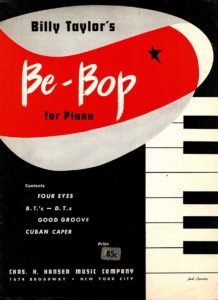 |
Billy Taylor Be-Bop For Piano |
| Billy Taylor The Jazz Life Of Dr. Billy Taylor (Billy Taylor Teresa L. Reed) Book |
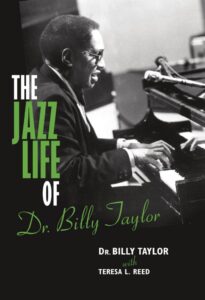 |
|
| Birdland Joe Zawinul Arr Semton Barlas – Full concert band |
 |
|
| Birdy Songbook Piano Vocal Guitar |
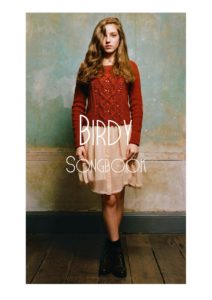 |
 |
| Birth Of The Blues, The Jimmy Lally sheet music |
 |
|
| Birtwistle Harrison’s Clocks for Piano Solo |
 |
|
| Bizet Georges – Habanera (From The Opera Carmen) Piano Solo Arr. (Musescore File).mscz | ||
| Bizet – Marche Des Rois Easy Piano |
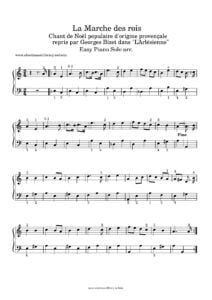 |
|
| Bizet, Georges Habanera (From The Opera Carmen) Piano Solo Arr. |
 |
|
| Bjork – Bachelorette |
 |
|
| Bjork – Hunter Sheet Music |
 |
|
| Bjork – Joga |
 |
|
| Bjork – Oh so quiet |
 |
|
| Bjorn Eidsvag Eg Ser Piano Solo sheet music |
 |
|
| Bjornstad Pianology | Bjornstad Pianology | |
| Black – Wonderful Life (Piano and vocal sheet music) |
 |
|
| Black – Wonderful Life (Piano And Vocal Sheet Music) (Musescore File).mscz | ||
| Black – Wonderful Life Piano and Lyrics | Black – Wonderful Life Piano and Lyrics | |
| Black Eyed Peas Don’t Lie Transcription By Deusde Coppen |
 |
|
| Black Eyed Peas Shut Up Transcription By Deusde Coppen |
 |
|
| Black Orpheus ( “Manha de Carnaval” or “A Day in the Life of a Fool”)Luis Bonfá | Black-Orpheus | |
| Black Sabbath – Guitar Signature Licks (Guitar Songbook) |
 |
Black Sabbath – Guitar Signature Licks (Guitar Songbook) |
| Black Sabbath Guitar Songbook |
 |
Black Sabbath Guitar Songbook |
| Black Sabbath Master Of Reality Guitar tab with lyrics |
 |
Black Sabbath Master Of Reality Guitar tab with lyrics |
| Black Sabbath Paranoid Guitar Songbook |
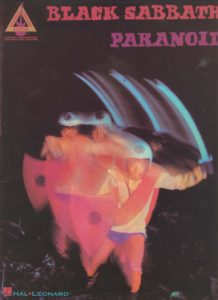 |
Black Sabbath Paranoid Guitar Songbook |
| Black Sabbath The Essential Black Sabbath Easy Guitar with Riffs and Solos with Tablature |
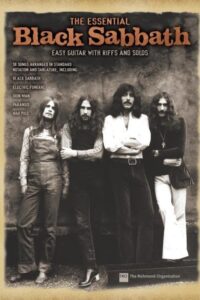 |
Black Sabbath The Essential Black Sabbath Easy Guitar with Riffs and Solos PDF with Tablature |
| Black Sabbath War Pigs Guitar Tablature | Black Sabbath War Pigs Guitar Tablature | |
| Blackbeauty – Baby Beauty – Danny Elfman | ||
| Blackbeauty – Main Theme – Danny Elfman | ||
| Blackpink – How You Like That | Blackpink – How You Like That | |
| BlackPink – Play with Fire (Piano Solo sheet music) |
 |
|
| Blackpink How You Like That Piano Solo |
 |
|
| Blade Runner – Love Theme Vangelis (For Keyboard) (Musescore File).mscz | ||
| Blake Neely – How To Play From A Fake Book Keyboard Edition Faking Your Own Arrangements From Melodies and Chords |
 |
Blake Neely – How To Play From A Fake Book KeyboardBlake Neely – How To Play From A Fake Book Keyboard |
| Blake Shelton Greatest Hits Piano Vocal guitar |
 |
Blake Shelton Greatest Hits Piano Vocal guitar |
| Blake Shelton Sheet Music Collection Piano Vocal guitar |
 |
Blake Shelton Sheet Music Collection Piano Vocal guitar |
| Blessings Arr Phillip Keveren The Phillip Keveren Series Piano Solo |
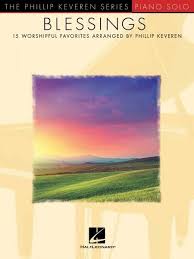 |
Blessings Arr Phillip Keveren The Phillip Keveren Series Piano Solo |
| Blind Guardian – The Eldar | ||
| Blink 182 – All The Small Things | ||
| Bliss Concerto For Piano And Orchestra |
 |
|
| Bloch, Ernest Ten Pieces For Children For Piano Enfantines |
 |
Bloch, Ernest Ten Pieces For Children For Piano Enfantines |
| Blondie Anthology |
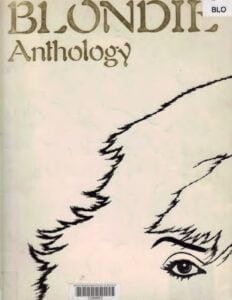 |
Blondie Anthology |
| Blondie The Best Of – Piano vocal Guitar chords songbook |
 |
Blondie The Best Of – Piano vocal Guitar chords songbook |
| Blossom Dearie Songbook piano vocal guitar |
 |
Blossom Dearie Songbook piano vocal guitar |
| Blowing In The Wind – Bob Dylan (Harmonica And Guitar) With Sheet Music (Musescore File).mscz | ||
| Blue – Breathe Easy | ||
| Blue Bossa (Jazz Piano Solo) Kenny Dorham |
 |
|
| Blue Bossa Piano – by Kenny Dorham |
 |
|
| Blue Mitchel When the Saints go marching in (solo transcription) |
 |
|
| Blue Mitchell – Blue Soul Solo Transcription |
 |
|
| Blue Mitchell – Love Solo Transcription | Blue Mitchell – Love Solo Transcription | |
| Blue Moon – Joe Pass (Musescore File).mscz | ||
| Blue Moon (Jazz Standard) Guitar Tablature TABs |
 |
|
| Blue Moon (Musescore File).mscz | ||
| Blue Moon (Rodgers & Hart) Piano sheet music |
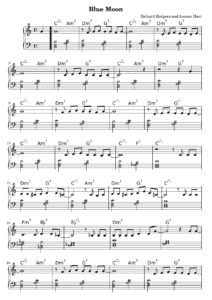 |
|
| Blue Notes Profiles Of Jazz Personalities by Robert P. Vande Kappelle (Book) |
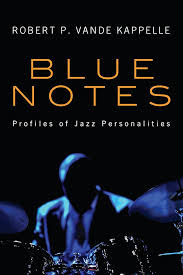 |
|
| Blue train (Jazz solo) | ||
| Bluegrass Fakebook 150 all-time favorites by Bert Casey |
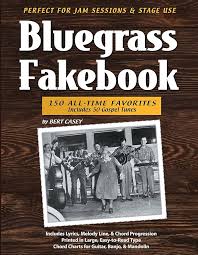 |
Bluegrass Fakebook 150 all-time favorites by Bert Casey |
| Blues – Best of Blues Piano (Signature Licks keyboard). 14 songs |
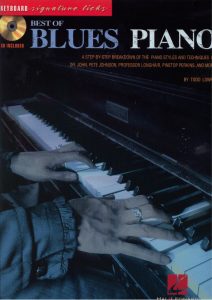 |
Best Of Blues Piano  |
| Blues & Soul Christmas (piano, guitar & vocal songbook) |
 |
Blues & Soul Christmas |
| Blues And Boogie Pour Piano Thierry Masson |
 |
Blues And Boogie Pour Piano |
| Blues And Jazz Preludes For Classical Guitar by Alexander Vinitsky |
 |
Blues And Jazz Preludes For Classical Guitar by Alexander Vinitsky |
| Blues Bass Play Along Trax (Guitar) |
 |
|
| Blues Fake Book, The |
 |
Blues Fake Book, The |
| Blues Guitar – Guitar Method -by Greg Koch (lessons and 20 great blues songs) (with Tablature) |
 |
|
| Blues Guitar (Classic) Jam With Songbook. With Mp3 Audio Tracks Play Along |
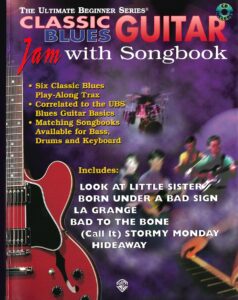 |
Blues Guitar (Classic) Jam With Songbook. With Mp3 Audio Tracks Play Along |
| Blues Guitar Basics by Keith Wyatt |
 |
|
| Blues Guitar Bible 35 Great Blues Songs (Guitar with TABs) |
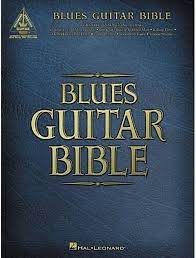 |
Blues Guitar Bible 35 Great Blues Songs (Guitar with TABs) |
| Blues Guitar For Dummies (eBook) |
 |
|
| Blues Guitar Play Along Vol. 7 with audio MP3 with Tablature |
 |
Blues guitar play along |
| Blues Guitar Soloing Master Class The Complete guide to blues lead guitar, techniques, concepts and styles Audio MP3 access included |
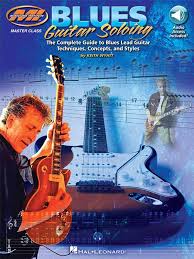 |
|
| Blues Guitar Tab 23 Transcriptions Of Modern Blues Guitar Greatest Performances |
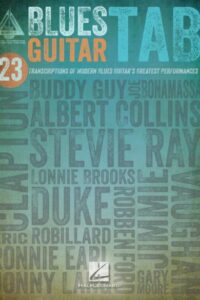 |
Blues Guitar Tab 23 Transcriptions Of Modern Blues Guitar Greatest Performances |
| Blues Guitar, The Anthology of (by Woody Mann) |
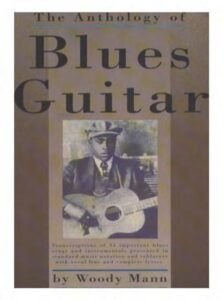 |
Blues Guitar, The Anthology of (by Woody Mann) |
| Blues Hanon – Theory Development Application by Leo Alfassy |
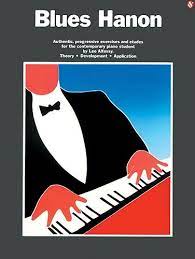 |
Blues Hanon – Theory Development Application by Leo Alfassy |
| Blues In F Joey Alexander Feat. Wynton Marsalis Sextet Jazz In Marciac 2015 sheet music transcription |
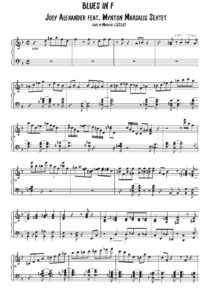 |
|
| Blues Jazz Rock Made Easy Next Step Guitar TAB |
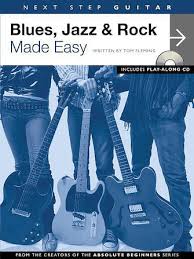 |
|
| Blues Keyboard – Around Midnight – 14 Blues Pour Piano by JOHANNES SCHMIDAUER |
 |
Blues Keyboard |
| Blues Piano For Beginners by Mark Harrison |
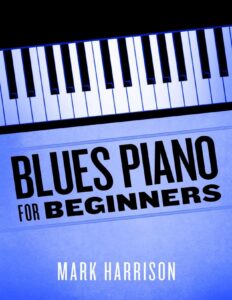 |
Blues Piano For Beginners by Mark Harrison |
| Blues Piano Gustavo Villegas (Spanish- Español) |
 |
Blues.Piano |
| Blues Piano Keyboard arr. Michat Kirkoff |
 |
|
| Blues Piano Legends |
 |
Blues Piano Legends |
| Blues Picking Blues Easy Blues for guitar leichte blues-sätze für gitarre bearbeitet von Dieter Kreider (German, Deutsch) |
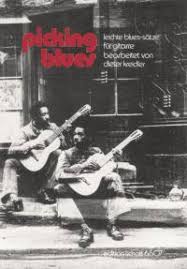 |
|
| Blues Play A Long And Solos Collection For Piano Beginner series by Andrew D. Gordon |
 |
Blues Play A Long And Solos Collection For Piano by Andrew D Gordon |
| Blues Riffs For Piano by Ed Baker (Great Riff series) |
 |
|
| Blues Rock for Classical Guitar | Blues Rock for Classical Guitar | |
| Blues To Jazz GuitarThe Essential by Jack Eskridge The essential guide to chords, progressions and theory |
 |
|
| Blues You Can Use – Guitar Chords – John Ganapes |
 |
|
| Blues-Rock Guitar Bible 35 Blues-Rock Songs (Guitar with TABs) |
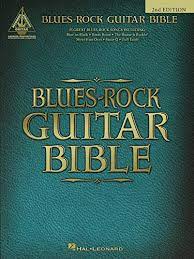 |
Blues-Rock Guitar Bible 35 Blues-Rock Songs (Guitar with TABs) |
| Blues, Encyclopedia Of The Blues (Edward Komara) Book |
 |
|
| Blues, Ragtime Blues And Hot Fiddle Tunes & Rags (Fingerstyle Guitar and TAB) Grossman Stefan |
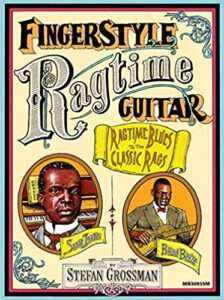 |
|
| Blues, The – David Baker’s Modern Jazz Series Improvisational Patterns |
 |
|
| Bluestone Alley Piano Tiles 2 Sheet Music | Bluestone Alley Piano Tiles 2 Sheet Music | |
| Blur The Best Of All the songs from the album arr. for voice and guitar with Tablaturef (Guitar songbook) |
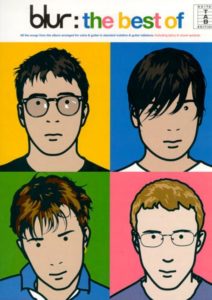 |
Blur The Best Of |
| Bob Ashton – You Can Teach Yourself To Compose Music (with audio MP3) |
 |
|
| Bob Berg Iconic Jazz Style for all instruments by Olegario Diaz |
|
|
| Bob Brookmeyer First Love Song Score And Parts | Bob Brookmeyer First Love Song Score And Parts | |
| Bob Carlisle – Butterfly Kisses | ||
| Bob Dylan Words and Chords (Bob Dylan) Book |
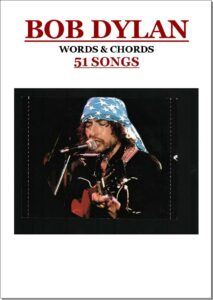 |
|
| Bob Dylan – Blonde On Blonde Songbook |
 |
Bob Dylan – Blonde On Blonde Songbook |
| Bob Dylan – Blowin In The Wind (Piano and voice) | Bob Dylan – Blowin In The Wind (piano and vocal) | |
| Bob Dylan – Blowin’ In The Wind – Arr. For Guitar (Musescore File).mscz | ||
| Bob Dylan – Blowin’ In The Wind (Guitar TABS and chords) |
 |
|
| Bob Dylan – Fingerpicking Style Guitar and TAB |
 |
Bob Dylan – Fingerpicking Style Guitar |
| Bob Dylan – Knockin On Heavens Door | ||
| Bob Dylan – Like A Rolling Stone | ||
| Bob Dylan – Rock Score (Guitar Songbook) |
 |
Bob Dylan – Rock Score (Guitar Songbook) |
| Bob Dylan – The Times They Are A’changin’ – Piano And Voice (Musescore File).mscz | ||
| Bob Dylan – The times they are a’changin’ – Piano solo sheet music with lyrics |
 |
|
| Bob Dylan – To Make You Feel My Love | ||
| Bob Dylan Anthology |
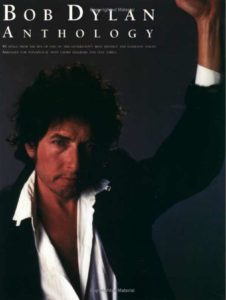 |
Bob Dylan Anthology |
| Bob Dylan Chronicles Volume One (Book) |
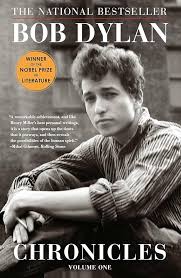 |
|
| Bob Dylan Definitive Songbook Guitar and Lyrics |
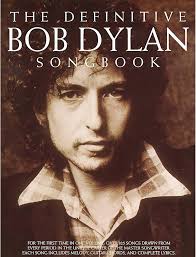 |
Bob Dylan Definitive Songbook Guitar and Lyrics |
| Bob Dylan Desire Songbook |
 |
Bob Dylan Desire Songbook |
| Bob Dylan Down In The Groove Songbook |
 |
Bob Dylan Down In The Groove Songbook |
| Bob Dylan Encyclopedia, The – Michael Gray (Book) |
 |
|
| Bob Dylan For Easy Piano |
 |
Bob Dylan For Easy Piano |
| Bob Dylan Greatest Hits Piano Vocal Guitar Chords |
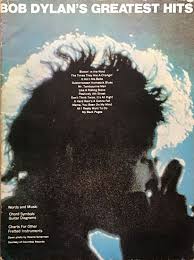 |
Bob Dylan Greatest Hits |
| Bob Dylan Highway 61 Revisited by Mark Polizzotti (Book) |
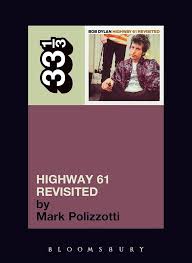 |
|
| Bob Dylan In America – Sean Wilentz (Book) |
 |
|
| Bob Dylan No Direction Home The Life And Music Of Bob Dylan (Book biography) by Robert Shelton |
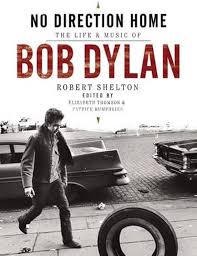 |
|
| Bob Dylan Outlaw Blues (Book) by Spencer Leigh (Biography) |
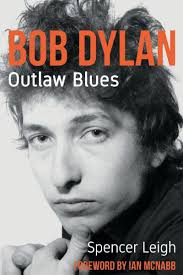 |
|
| Bob Dylan Play Acoustic Guitar With – Book + MP3 audio tracks play along with Tablature |
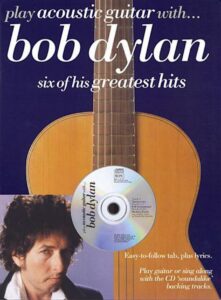 |
Bob Dylan Play Acoustic Guitar With – Book + MP3 audio tracks play along sheet music |
| Bob Dylan Songbook, The |
 |
Bob Dylan Songbook, The |
| Bob Dylan The Songs Of Bob Dylan From 1966 Through 1975 Guitar and Lyrics |
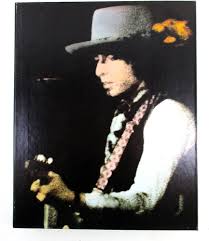 |
Bob Dylan The Songs Of Bob Dylan From 1966 Through 1975 Guitar and Lyrics_compressed |
| Bob Geldof – I don’t like Mondays (piano and vocal sheet music) |
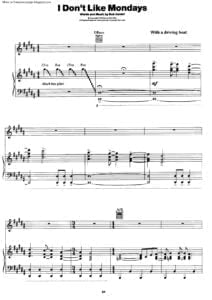 |
|
| Bob Haymes – That’s All Jazz Standard (Piano Solo Sheet Music) |
 |
|
| Bob James And His Music sheet music Book |
 |
Bob James And His Music sheet music Book |
| Bob James The Musical Styles of |
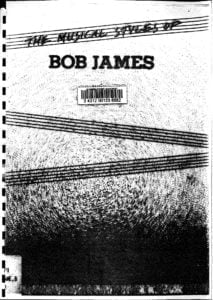 |
Bob James The Musical Styles of |
| Bob Marley – 1945-1981 Ten greatest hits (piano) |
 |
Bob Marley – 1945-1981 |
| Bob Marley – Best Of -5 songs (FULL SCORE) |
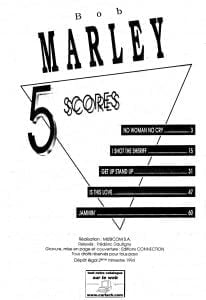 |
|
| Bob Marley – No Woman No Cry | Bob Marley – No Woman No Cry | |
| Bob Marley – One Love – The Very Best of Bob Marley and The Wailers (Bob Marley) Guitar Tablature TABs |
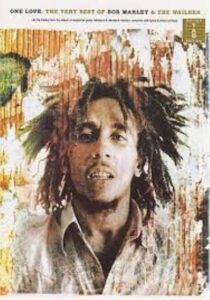 |
Bob Marley – One Love – The Very Best of Bob Marley and The Wailers (Bob Marley) Guitar Tablature TABs |
| Bob Marley – Play Guitar With – incl. MP3 audio tracks Play Along with Tablature |
 |
Bob Marley play with |
| Bob Marley (Guitar chords Songbook) (Marley, Bob) |
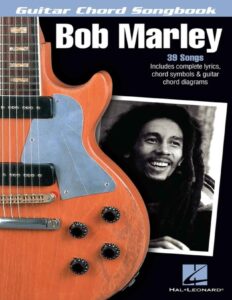 |
Bob Marley (Guitar chords Songbook) (Marley, Bob) |
| Bob Marley A Biography by David V. Moskowitz |
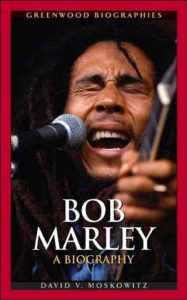 |
|
| Bob Marley Could You Be Loved Easy Piano Solo | Bob Marley Could You Be Loved Easy Piano Solo | |
| Bob Marley Guitar Book with Tablature |
 |
Bob Marley sheet music book |
| Bob Marley Guitar Chord Songbook |
 |
Bob Marley Guitar Chord Songbook |
| BOB MARLEY I shot the sheriff | Bob Marley I-Shot-The-Sheriff | |
| Bob Marley Songs Of Freedom |
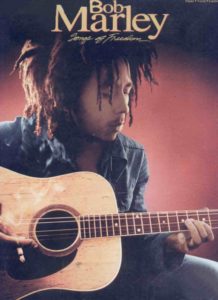 |
Bob Marley Songs Of Freedom |
| Bob Marley The Best Of – Easy Guitar Songbook |
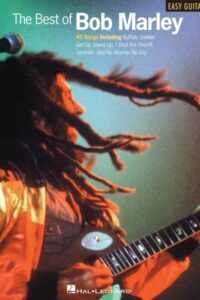 |
the-best-of-bob-marley |
| Bob Marley The Essential Bob Marley Easy Guitar Tablature |
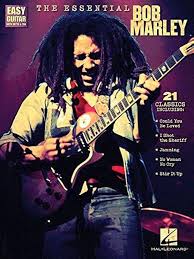 |
Bob Marley The Essential Bob Marley Easy Guitar Tablature |
| Bob Marley The Words And Music Of Bob Marley (by David Moskowitz) Book |
 |
